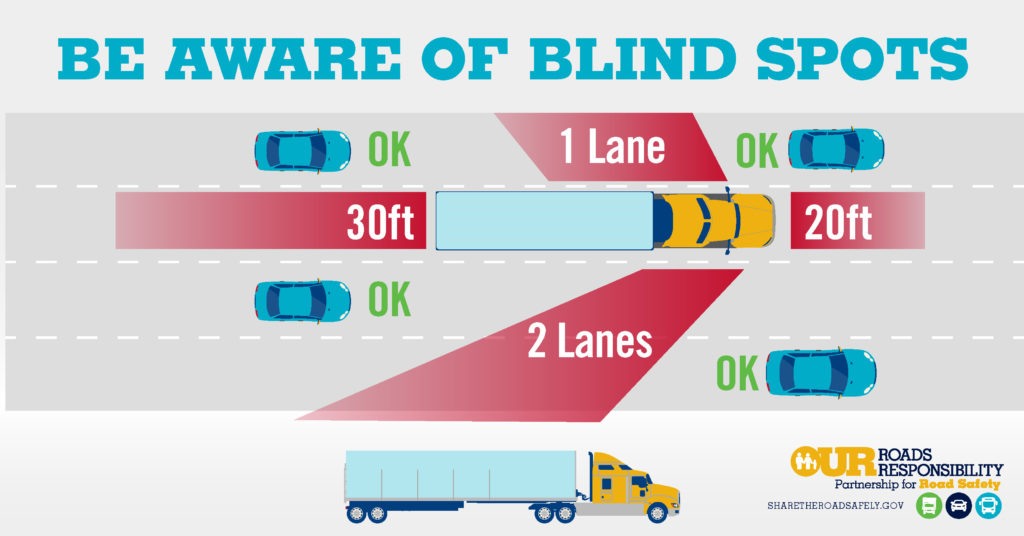Is Driving A Semi Truck Hard?
For new drivers, driving a semi truck can be daunting and intimidating at first hearing. So is driving a semi truck hard? How can you master this skill for the possible career change ahead? Let’s follow along with Car From Japan!
If you are thinking about finding a job as a long-distance semi-truck driver or have an interest in this type of heavy vehicle, sit back, do your research, or think carefully before making any decision regarding daily driving or contact with the semi trucks. It is ideal to have a good income from this large cargo vehicle. However, you had better consider the external factors that directly affect your mental health, physical health, and most importantly, the capability to drive and control calmly in any situation.
Here are a few semi truck driving notices you may find useful.
Is Driving A Semi Truck Hard?
With the right coach or mentor, you should feel comfortable and to some extent quite confident, if not in the early stages, then certainly in the late stages. Because at first, most people can be a bit confused as you will be moving from a car, pickup, or truck to something larger and with more capacity. Not to mention the gears will be anything from 10 to 18 for the semi truck.
So if you’re still wondering is driving a semi truck hard, here’s a summary. Learning to drive a semi is difficult when you’re just starting and have no basic knowledge of anything related. Because driving this kind of vehicle requires a lot of responsibility to operate and maneuver. There will also be many controls and dash gauges to notice and be aware of in advance while road regulations are stricter.
However, learning to drive a semi-truck will become much easier with a reputable training school or dedicated instructor, plus your willing attitude and existing ability.
Is Driving A Truck Harder Than A Car: The Differences
Needless to say, driving a semi truck is way more complicated than driving a passenger car. It’s also more difficult to keep an eye on your surroundings, and with the stress of keeping yourself, your community, and other road users safe, it’s a big responsibility for semi-truck drivers that cannot be taken lightly.
Typical car drivers can pick up their keys to check their fuel and probably have their tires and oil checked regularly, though most don’t. Semi truckers must meet specific regulations and deal with fines and tickets if they don’t. Not only do they take the keys, but they also have to go around before each journey to check for defects and ensure the goods are safe. While a typical car driver only jumps in and asks if everyone has buckled their seat belts and then gets out.
In addition, if the semi truck driver misses a turn, it is not easy to make a U-turn to get back on the right track. Overall, life as a semi truck driver is not bad at all. It’s only harder and more complicated than driving a car to a large extent.

License
One thing that can prevent the everyday driver from thinking they can instantly own a truck is that legally, it’s not possible. Standard driver’s licenses apply to cars, vans, and light trucks, but not buses, semi trucks, or 18-wheelers.
To legally operate one of these vehicles, including semi trucks, you will need a commercial driver’s license or CDL. Getting a CDL isn’t just about recording hours and passing a road test. You’ll need to pass several classes and tests before being trusted to handle an enormous set of wheels and carry more responsibilities.
Size and weight of a semi truck
The sheer size and weight of a semi truck compared to your average four-door sedan are enough to make it a horse of different size and weight. From there, it’s simple physics; A larger, heavier object will take longer to come to a stop, which means you will have to have a whole new braking feel. Overcoming rough terrains such as hills, and slippery roads is also more difficult when behind the wheel of a semi truck and requires even more care than when you are driving a typical passenger car.
Maneuver and steer a semi truck
Driving is relatively easy for newer trucks, and even older cars are well-maintained thanks to more advanced technology. Driving a new truck is as easy as driving a family car.
The maneuver, on the other hand, is a different topic. If you are wondering what is the hardest part of driving a semi truck, maneuvering may lie at the top of the list. But thanks to its easy controllability, it requires only logic and a bit of planning. Knowing your semi truck’s exact size and mastering some truck driving tips will help a lot, and if not, stop and hop out to look around as many times as you need to.
Change gears on a semi truck
As a beginner, changing gears on a semi truck can not be easy. And sitting with all the numbers and having to know when to shift and which gear to choose takes a lot of practice and hard work. After a while, you will get used to the process, and it will become easy.
There is a type of gear shift to match the speed of the car, just like a car. The only difference is that you have more gears, sounds simple right?
Apply brakes on a semi truck
Applying the break is easy, but the driver’s response and the vehicle’s stopping distance is the real issue here. If a truck driver is not planning the road properly or gets drowsy, their response time is affected, which can be catastrophic.
Breaking earlier in response to early planning will keep everyone safer. Furthermore, you should keep the weight of the truck in mind and the time it takes to stop that load as one of your priority concerns.
Loading on a semi truck
As for the semi truck, it’s made for towing and hauling, so it shouldn’t be too difficult unless you ignore the weight regulations. It would be a very bad idea since they are located separately from the load of the truck, but for the driver, it can be a completely different story.
First, the driver has to think of a route, but that is not easy because they also have to think of an alternative route to change direction. This can happen at any time, and with a large vehicle to control, you can’t turn around that easily. When turning, they had to think of low bridges, narrow streets, and hanging ropes. In this case, they will need to plan several routes as a precaution and all this in addition to sticking to their schedule. Each state has rules and regulations for semi trucks, some of which require a license.
The blind spots when driving a semi truck
Knowing your blind spot can be relatively easy, but keeping track is quite a challenge.

In semi trucks, or 80-foot trucks and trailers, regular observation is a habit that keeps you and others safe. Also known as Truck Zones or No Zones/No-Go Zones, these four zones are:
- Within 30 feet of the semi truck back.
- Within 20 feet in front of the semi truck.
- One lane on the left
- Two lanes on the right
These are areas where you, as a semi truck driver, will not be able to see around the vehicle.
> See more: How To Share The Road With Semi Trucks
Responsibility when driving a semi truck
The responsibility is probably the burden you will feel directly about what is it like to drive a semi truck. The semi truck you drive carries a lot of power and weight, and so are the drivers. As professional drivers, CDL wearers must meet a high standard of driving excellence, as well as set that standard for others.
The difference between driving a semi truck and driving a car is not only obeying the road laws but also complying with all federal regulations related to commercial driving safety. That means never texting while driving or driving while drunk. If you can do all these above things, you’re a pro and so lucky, after all.
Dashboard Gauges Drivers Need To Monitor When Driving A Semi Truck
With a semi-truck that is large and complex to handle and repair, there are a lot of gauges or signals on the dashboard that you need to pay attention to regularly. The layout of the gauges varies between semi trucks, but they are all crucial to drivers and help them keep up with situations before anything bad happens. Here is a list of dash gauges to occasionally monitor and inspect for semi truck drivers.
- Speedometer
- Engine oil temperature (check while driving)
- The oil pressure gauge needle should move 40 – 90 when accelerating (check while driving)
- Outside air temperature gauge (check while driving).
- Water temperature gauges up to 200 (check while driving)
- Air pressure gauge
- Manifold pressure gauge
- Main communication thermometer
- The thermometer measures the temperature of the people behind and in front
- Exhaust gas temperature gauge
- Rear clock
- Ammeter
- Fuel filter gauge
- Air cleanliness meter
- The regulated voltage meter must be above 12V (check while driving)
- Alternating voltage
- Exhaust Aftertreatment System (EATS) status
Looking at the list above, it seems that your work of checking the engine machinery thoroughly is quite a feat. However, not all semi trucks have all of these gauges. So you can familiarize yourself with each gauge and its function in your semi truck. Before performing any comprehensive inspection, make a long and detailed checklist to follow up without worrying about missing any parts affecting the semi-truck operation later.
Notices For New Drivers and FAQs On Driving A Semi Truck
What road regulations should a semi truck driver need to notice compared to a regular one?
In addition to the usual road traffic laws, there are several other regulations that truckers need to follow. This varies from driving hours to payload requirements. Stop tests and tachometers are some of the ways to enforce these laws. Truck drivers are allowed to drive for up to 11 hours after 10 consecutive hours of off-duty. This can be extended up to 14 hours under adverse conditions. They must take a 30-minute break if they have been driving for 8 hours straight.
Also, it’s the driver’s job to make sure the truck doesn’t exceed its maximum load by regularly checking at the warehouse. You will also receive a printout which can be checked on your itinerary.
Learning to drive a semi truck will take a driver for how long?
Each state has its idea of training time. Trainee semi truck drivers need to complete their CDL. It also depends on whether you can attend your CDL training part or full-time. However, before all that, you need to have a commercial license (CLP) for at least 14 days. Companies require between 120 and 160 hours of training to complete and are signed by a fully qualified instructor.
How old is a qualified semi truck driver?
To be eligible to learn to drive and operate a bulky semi-truck, you must be 18 years of age or older and have at least 2 years of experience driving in the area. Plus, if you’re 21 or older, you’ll need to have proficient cross-country or state driving experience, also for at least 2 years.
For a full-packed semi-truck driving quality, you will not be suspended for traffic violations, DUI/DWIs, failure to pay child support, or failure to appear in court. You must also pass a background check and have proof of citizenship, be able to read and speak English and hold a valid medical examiner’s certificate.
Getting a license to be qualified as a semi-truck driver sounds like a long and difficult process, but it’s all worth it, with your time and effort.

What are the qualifications for a high-demand semi truck driver?
As it stands, apart from having the required documents above, there are no official qualifications to enter the CDL school for training. Upon successful completion of your training, you will be awarded a certificate. You may then have to complete a short training program with the company you’re applying to qualify for that role, and some even have to undergo drug testing before driving.
As it stands, apart from having the required documents above, there are no official qualifications to enter the CDL school for training.
What does it take to drive a semi truck?
In addition to all the requirements that we have stated so far, you need to have the courage to become a truck driver. When considering the size of the vehicle you’re driving, you also need to have the skill and patience for other vehicles on the road that don’t all understand the space you need.
Loving the open road and being alone for long periods, a positive mental attitude in a way that is almost comfortable but not too comfortable is a good thing. Above all, it takes a desire, a desire to do the job, and a desire to be a high-qualified semi truck driver.
Where can you learn to drive a semi truck?
Many truck driving schools have been granted certificates across the country. They are usually found at community colleges and cost between $5,000 and $10,000 upfront. There is a cheaper way! By enrolling in a trucking company training program they will guide you step by step and some even guarantee employment upon completion and also pay you for the time you train.
They will probably force you to sign a conditional contract that says you will stay with the company for one period. However, it’s a great way to get your foot in the door and a trail that we would recommend.
Wrapping Up
After scrolling through this article, we hope that you can find insightful info on this topic. Learning to drive a semi truck is not as hard as you think at first. Hope the question “is driving a semi truck hard” will not be your concern anymore and you can get a great career as an experienced semi truck driver and enjoy every bit of that journey.














